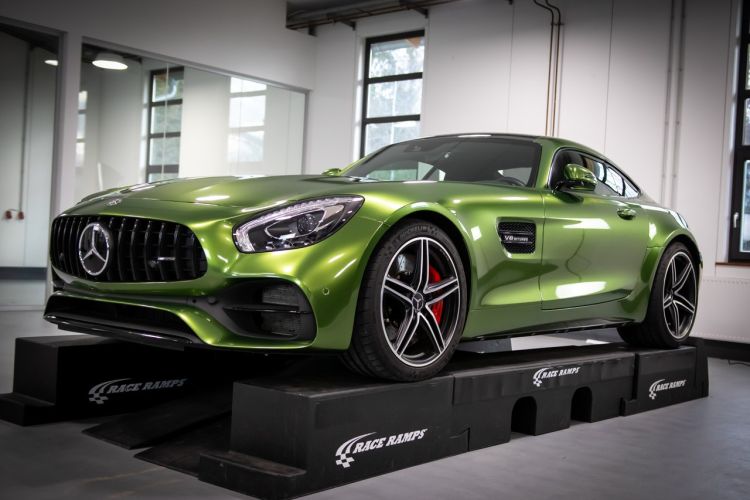Raring to go: The growing popularity of car wrapping


Car-wrapping has gone from being an underground niche to a well-used technique to spruce up a vehicle without the long-term commitment. Until the late 2000s, car-wrapping was associated with commercial use, the sole purpose being to advertise. But then, around 2008 to 2011, there was boom of colour change wraps for personal use, first across Europe and then in the USA. While paint jobs have been the staple, traditional method of decorating cars, the past few years have seen a huge growth in car-wrapping.
Stripes & Graphics, based in Shropshire (UK), is one such company that has seen a new influx of customers from other industries look towards car wrapping over the past few years after 30 years in the business. In 2020, the company invested in the Mimaki CJV150 printer/cutter to bring the printing process in house. In addition to creating and fitting high-quality, customer vehicle graphics, Stripes & Graphics also handles all the branding and signage across the dealerships.
This wrapping technique is not just resigned to advertising or customising, with PPF (paint protection film), a clear film which protects from chipping and scratches, seeing a surge of popularity in the past few years. For Stripes & Graphics fitting the paint protection film has become a key part of their offering for high-end vehicles to ensure they stay looking as good as when they left the showroom.
Both paint and car wrapping techniques have their pros and cons, and it’s undeniable that there needs to be a good paint base to wrap. However, wrapping, with the release of new technologies, materials, and tools, opens almost unlimited possibilities. Duncan Jefferies, Head of Marketing & Business Development at Hybrid Services Ltd, Mimaki’s exclusive distributor for UK and Ireland, says, “Printers like Mimaki’s CJV150-160Plus and UCJV300 Series can quickly produce an infinite number of vibrant designs on film in a wide range of colours and then, seamlessly, laminate them for longevity – and it’s all done so cost-effectively.”
These days there are an array of different inks on offer as well, when initially solvent was the only go-to option. UV inks originally cracked in recessed areas, but new developments have meant that they now can withstand over stretching and extreme recessed areas, without sacrificing consistent colour. UV inks can instantly dry, allowing for a quick turnaround time from printing to laminating without the need for gassing time. Unlike solvent inks, UV creates a slight texture on the film, which can be removed if desired.
Duncan adds, “Certainly, for a big fleet or for when the job needs to be done swiftly, UV or latex are stand-out picks. But for extreme 3D shapes, i.e., bumpers, mirrors, and other recessed areas, are often better served by eco-solvent or Mimaki’s LUS200 inks.”
There are also a lot of options to choose from when it comes to film, the main three being cast, poly and mono. Cast has remained the most popular choice for car-wrapping, renowned for a high-quality finish, but polymer has become more common, with its more conformable qualities.
Duncan Jefferies concludes, “The car-wrapping industry seemed to be on the verge of exploding back in January 2020, and that growth has only been amplified over the course of the pandemic. Namely the practical benefits of car-wrapping, primarily the protective layer it creates around the car, have also helped boosted its popularity. While it requires a lot of physical skill, this changing and rapidly growing industry certainly makes for an exciting venture for those in the Sign Graphics market or considering it.”
